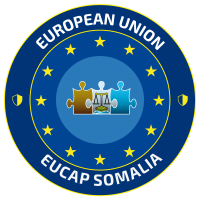Story – One of us: Jan*

A policing approach can make a difference, can help dialogue, democracy.
Can save lives.
You just have to read the Human Rights handbook on Policing Assembly published by the OSCE Office for Democratic Institutions and Human Rights (ODHIR) in 2016 to get the idea.
In a nutshell, when the police approach is based on dialogue with demonstrators going to the streets for a wide range of reasons, the pay back is more order and less chaos, and moreover more space for the Human Right of freedom of Public assembly.
Jan, a Dutch Senior Police Officer now working for EUCAP Somalia, is a pioneer of such approach. Through his work, he has contributed to make policing a tool not just to maintain order, but also to ensure respect for Human Rights. He has been part of a European avant-garde in safeguarding rights and safety at once in policing public assemblies.
His vocation for being a ground-breaker police officer dates back to the early 80s, when he was a still a youngster. At the time, the streets of Amsterdam, the capital of The Netherland, were on fire. The “Amsterdam coronation riots” erupted on 30 April 1980 on the occasion of the coronation of Queen Beatrix. This was the biggest episode disturbances in the country since the end of World War II. Squatters protested against the opulence of the monarchy to the cries of: “No house, no coronation”.
“I hated the violence I was seeing from the demonstrators’ side, as well as the police side” says Jan, at the end of one of his busy working days in the Somali capital Mogadishu, recalling those old days.
Becoming a police officer was the right job for “combining thinking and doing, so after finishing school I joined the Police Academy” explains Jan, wearing a blue shirt with the EUCAP Somalia logo attached on it.
“As a policemen you are in contact with society, with people” continues Jan, recalling some of the steps of his career, from the Criminal and Investigation Department (CID) to becoming Chief of Operations in several Amsterdam’s districts, to creating the Police Peace Unit. The latter was an innovative method that made (and makes) school, as it is used as a policing model to guarantee order respecting the right of peaceful assembly at the same time.
The commitment to an harmonious and multi-ethnic society appears almost a vocation in Jan’s life. It is not surprising that whilst being busy with his demanding job he found the time to get a degree in Urban Sociology.
Meeting demonstrators in his capacity of Commander of the Peace Unit of the Amsterdam Police gave Jan the opportunity to get to know many refugees and minorities groups.
“Sharing experiences with people from different culture was energizing” says Jan.
As the Peace Unit advocates for dialogue with demonstrators, Jan had the opportunity to learn through direct sources how seeking help to the police in certain areas of the globe can be a rather different experience than in The Netherlands.
Plenty of literature on human rights abuse at the hand of security forces at different latitudes is available to corroborate such recounts.
After twenty years leading the Amsterdam Peace Unit it was time for Jan to try and do something in the very places where many of the people he was networking with came from.
Somalia was on the list.
Now that he works in Mogadishu, Jan feels motivated every times he comes back from the Police HQ, where he spends time mentoring his Somali colleagues: “I am energised by their enthusiasm for change”, he explains.
“I feel there is an urge in helping to make Somalia a safer place for the people” adds Jan.
His Somali colleagues share the same view.
And this is how the distance between Europe and the Horn of Africa becomes a mere geographical concept.
*The protagonist of the story prefers the use of his first name only
